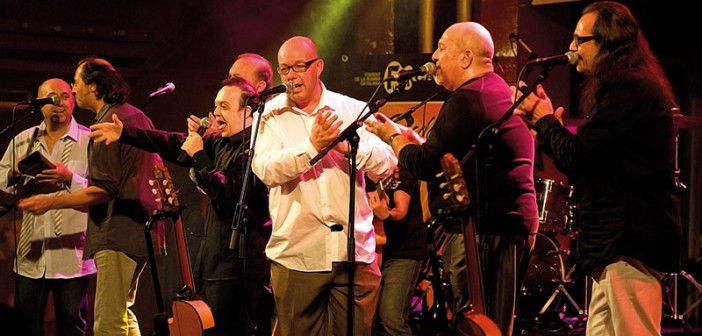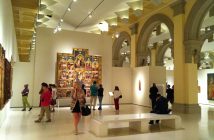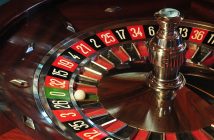Barcelona’s music scene is as cosmopolitan as the city itself. Billboards and flyers promote big name DJs, rock concerts, theme nights… and as the lyric goes,
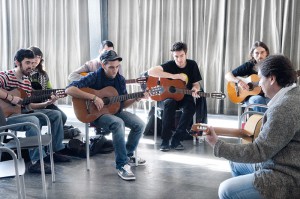 “This could be Rotterdam or anywhere, Liverpool, or Rome.” However, behind the glossy surface the city has its own distinctive sound and re-emerging scene; the Rumba Catalana. And if you’re in Barcelona in November, you have a treat in store – the Diada de la Rumba brings together performers and fans for a celebration that reaches from deep into its roots to the freshly unfurling leaves of new talent.
“This could be Rotterdam or anywhere, Liverpool, or Rome.” However, behind the glossy surface the city has its own distinctive sound and re-emerging scene; the Rumba Catalana. And if you’re in Barcelona in November, you have a treat in store – the Diada de la Rumba brings together performers and fans for a celebration that reaches from deep into its roots to the freshly unfurling leaves of new talent.
We spoke with Txarly Brown, DJ, musician and graphic designer, who is also perhaps the le ading authority on the Rumba Catalana. He published a visual biography of the genre, entitled “Achilibook”, in 2013.
Its history is long and complex, evolving alongside the culture that has breathed it into life through the musical encounters, inspirations and politics of each decade.
Rumba Catalana originated in the early 1960s as a fusion of Catalan gypsy flamenco music with Cuban and Columbian rhythms. The country was under Franco’s dictatorship and there wasn’t much new music or immigration entering its shores. These Latin rhythms were brought by American soldiers who arrived at the port of Barcelona and frequented the local bars.
T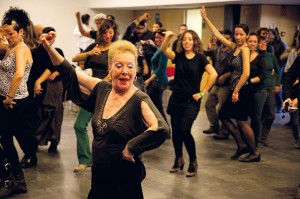 he Catalan gypsy singer Peret is considered to be the greatest early pioneer of the genre, which he describes as a fusion between mambo and rock.
he Catalan gypsy singer Peret is considered to be the greatest early pioneer of the genre, which he describes as a fusion between mambo and rock.
Whilst flamenco is associated with deep lament and passion, Rumba Catalana is more about fun and humour; its lyrics tend to be simple celebrations of life and the positive struggle for social justice.
This upbeat tone was readily accepted by Franco’s regime. Its songs were constantly played on the two existing TV channels and radio stations, and it rose easily into the mainstream. After the 60s the Rumba fused with rock and funk, and had a big boom in the 70s when it was considered to be the most upbeat (and most permitted) style of music. However, following the dictatorship’s collapse in 1975, the Rumba’s popularity plummeted as many people associated it with an era they were keen to move on from.
A new style appeared in the 80s, named after the gypsy neighbourhood of Caño Roto in Madrid from which it emerged. This gypsy rock had a social component and spoke of the urban reality and post-dictatorship transition towards a fragile democracy. In Barcelona there wasn’t much Rumba being played until it was revived by Gato Perez in the 80s and 90s. He inspired groups like Los Manolos, who were popular with left wing socialists, and appeared during the 1992 Olympics Games.
The Gypsy Kings also followed in his footsteps and achieved huge international commercial success. Manu Chao went on to give the sound a mestizaje twist in the 90s, and contemporary groups like Ojos de Brujos, La Pegatina and Muchachito Infierno continue to keep the sound alive and still evolving today.
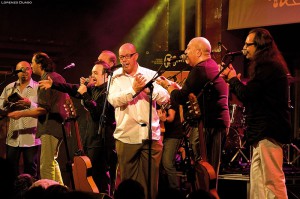 “Right now there’s a lively Rumba Catalana scene,” Txarly Brown comments. There are several venues that play Rumba, including the Rumba club which I manage at Club Plataforma every Friday.”
“Right now there’s a lively Rumba Catalana scene,” Txarly Brown comments. There are several venues that play Rumba, including the Rumba club which I manage at Club Plataforma every Friday.”
He goes on to observe that it’s a pity that so few visitors to Barcelona get to experience this. “The tourist market is so directed by the tour operators, who just send everyone to the Palacio del Flamenco and other commercial venues. They don´t discover the real sounds and ambience. There are so many talented DJs and performers who can´t easily reach these tourists.”
The Diada de la Rumba was inaugurated 5 years ago and is steadily attracting more newcomers to its annual celebration. It is supported by the local government, and presents its program completely for free. “This city is defining itself as a cultural EuroDisney – but it´s not just about Sonar and the Sagrada Familia, we need to have something else to offer visitors and the local authorities know this,” comments Txarly Brown.
The organization behind this event, FORCAT, was established to support the Rumba community and introduce it to a wider public. Secretary Martí Marfà Castán explains the structure of the event. “First there´s the educational element, with guitar, vocal, and other music workshops. Then we have debates, book presentations, exhibitions; a more intellectual aspect. There’s activities for families and children. And of course, live Rumba music

